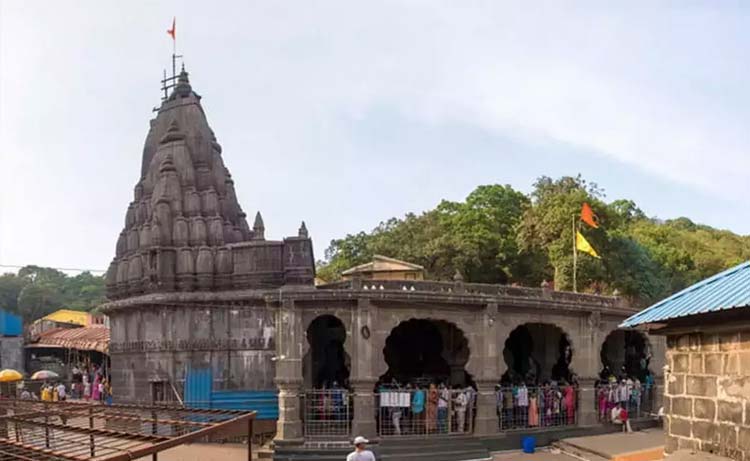Best Time to Visit Bhimashankar
Date: 21 November 2023

What is the best time to visit Bhimashankar
A visit to Bhimashankar Temple is excellent during a season that suits your interests and the type of experience you are looking for. Depending on your interests and the kind of experience you're looking for, there is no set optimum month to visit Bhimashankar Temple.
Best Time to Visit Bhimashankar
Nonetheless, considering a number of variables, the subsequent months are typically advised:
Summer Season (March to May):
This place has intense summer heat, with highs of 23°C to 37°C and lows of humidity. Although the trekking is a little more challenging during this time of year, travellers can still explore other neighbouring sights. Travellers on a limited budget should take advantage of the exceptionally low hotel rates during this period. The Bhimashankar Sanctuary is teeming with jamun and mango trees this time of year.
Winter Season (October to February):
In winter, Bhimashankar is a joy, with a maximum temperature of 30°C and a minimum of 13°C. People can see very well in the sky, making it ideal for outdoor activities. It's said that winter is the best season to see a variety of creatures in the sanctuary. There are rivulets, waterfalls, cliffs, and boulders along the well-marked trekking routes. With permission, visitors are also permitted to set a camp there. The Hanuman Lake site is a great place to have a family picnic and a peaceful evening during this season.
Monsoon Season (June to September):
Bhimashankar experiences a temperature range of 20°C to 32°C throughout this season, along with plenty of rain from the south-west monsoon. Even though it can be challenging to sightsee during periods of high rains, pilgrims can still readily visit the temple. The evenings are relaxing and cosy. For daring hikers and thrill-seekers having the time of their lives, the routes become more difficult during the rainy season. Tourists can enjoy the most breathtaking views of the valley and the splendour of nature at its finest at the following locations: Bombay Point, Nagphani Point, Vanaspati Point, and Gupt Bhimashankar. The black eagle, Quaker babble, Malabar whistling thrush, and Malabar grey hornbills all have their mating cries clearly audible.
Festivals Celebration Time at Bhimashankar Temple
In addition to Mahashivratri, Bhimashankar Temple is well-known for the following worthwhile festivals:
Shravan Maas (July/August):
Lord Shiva is the focus of the holy month of Shravan, which draws a sizable number of devotees to the Bhimashankar Temple.
During this auspicious month, devotees visit the temple, maintain fasts, and pray for blessings.
To honour Lord Shiva, special rites and pujas are performed, and the temple is decked out with flowers.
Gudi Padwa in April/March:
The Maharashtrian New Year, known as Gudi Padwa, is widely observed in the area.
Devotees assemble at Bhimashankar Temple to pray for blessings for a happy year ahead. Cultural events are planned to commemorate the occasion, and the temple is decorated.
Ganesh Chaturthi (August/September):
Ganesh Chaturthi is a major Hindu celebration honouring the elephant-headed god Ganesha.
During this festival, unique prayers and rituals are observed at the Bhimashankar Temple.
Devotees come to the temple to enjoy the festive atmosphere and ask Lord Ganesha for blessings.
Durga Puja and Navratri (September/October):
During the nine-night festival of Navaratri, which honours the divine feminine force, the Bhimashankar Temple honours the might of Goddess Durga.
Prayers are offered, and devotees take part in unique pujas and aarti rituals.
Diwali (October/November)
Also known as the Festival of Lights, is widely observed with tremendous merriment throughout India.
During this auspicious time, devotees visit Bhimashankar Temple, which is illuminated, to offer prayers and seek blessings. Cultural programmes and fireworks are organised to create a joyful mood.
FAQ’s About Best Time to Visit Bhimashankar
Q1. Which city is home to Bhimashankar Jyotirling?
The village of Bhorgiri, in the Pune region of Maharashtra, India, is home to Bhimashankar Jyotirling.
Q2. Is a day trip to the Bhimashankar temple sufficient?
It normally takes one day to visit the Bhimashankar temple and take in the surrounding area. That might, however, change based on your own preferences and how long you want to spend in the temple complex.
Q3. While in Bhimashankar, what should I wear?
When visiting Bhimashankar, it is best to dress comfortably and modestly. It is advised to dress conservatively and respect the devotees' religious feelings because it is a hallowed area. Additionally, as there may be some walking required in the temple complex, wear comfortable footwear.
Q4. What makes Bhimashankar so well-known?
One of the twelve Jyotirlingas devoted to Lord Shiva, the Bhimashankar Jyotirlinga, is housed in Bhimashankar, which is well-known for this. Occupying the rich green woods of the Sahyadri range, it is also renowned for its picturesque splendour. Trekkers, environmental enthusiasts, and devotees are drawn to the area because of its tranquil atmosphere.
Q5. The Bhimashankar Jyotirlinga has how many steps?
Notable features of the Bhimashankar Jyotirlinga temple include its elaborate architecture and the set of steps that lead to the sanctum sanctorum. Devotees ascend a considerable number of stairs in order to offer their prayers to Lord Shiva, though the precise number may vary.
Q6. Which Jyotirlinga in India is the hardest to visit?
Every Jyotirlinga has a unique importance, and depending on a number of variables like geography, accessibility, and location, visiting them might be easier or harder. Depending on personal preferences and physical capabilities, it is impossible to identify which Jyotirlinga is the hardest to visit.

